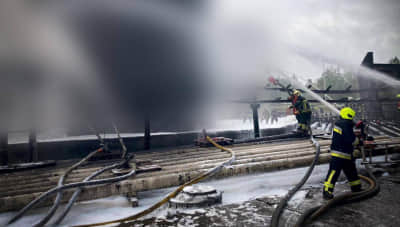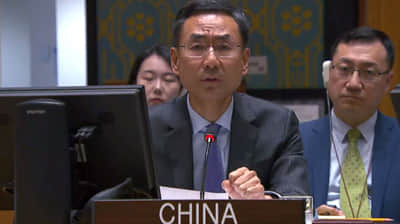Ukraine has dealt with aftermath of Russian terrorist attack on Kakhovka HPP, avoiding worst outcomes
Ukraine has dealt with the aftermath after a Russian terrorist attack on the Kakhovka Hydroelectric Power Plant (HPP), avoiding outbreaks of infectious diseases, in particular cholera.
Source: Ihor Kuzin, Chief State Sanitary Doctor and Ukraine’s Deputy Minister of Health
Quote: "Thanks to the coordinated work of specialists from the Centres for Disease Control and Prevention, doctors, emergency services, the prompt exchange of information with local authorities and the fact that people listened to restrictions and recommendations, outbreaks of infectious diseases have been avoided," Kuzin said.
According to the chief state sanitary doctor, three infectious diseases hubs were deployed in the affected territories. More than 3,000 people with acute intestinal infection were examined for cholera, the disease was not detected in a single case.
In general, if in the first days after the flooding bacteriological indicators showed the discrepancy between sanitary standards of 35%, now the level of pollution of water bodies has decreased to a deviation of 10% at certain monitoring points.
Monitoring of surface sea and river water bodies will continue in the future.
"In case deviations or non-compliance with sanitary and hygienic standards is recorded, the Centres for Disease Control and Prevention will inform local governments and communities about possible risks," Kuzin said.
Since July, experts have studied more than 100 soil samples in the territories of affected hromadas in the flooded areas of Mykolaiv and Kherson Oblasts, where the water has completely receded and the land has dried up [a hromada is an administrative unit designating a town, village or several villages and their adjacent territories – ed.].
Background: After the destruction of the Kakhovka HPP on 6 June, 180 settlements of Kherson, Dnipropetrovsk and Mykolaiv oblasts, with a combined population of almost 900,000 people, became an emergency zone.
Almost 700,000 Ukrainians were left without access to drinking water, 148,000 tonnes of drinking and technical water were delivered to the emergency zone for the needs of the population and to prevent outbreaks of infectious diseases.
Immediately after the terrorist attack on the Kakhovka HPP, 97 groups of rapid response to biological, chemical and radiation threats were formed on the basis of the centres for disease control and prevention on the territory of Dnipropetrovsk, Zaporizhzhia, Kherson, Mykolaiv and Odesa oblasts.
The Centres for Disease Control and Prevention have issued 237,000 tablets to disinfect drinking water for the population, water supply companies and critical infrastructure.
Starting from 6 June, specialists of the Centres for Disease Control and Prevention conducted more than 80,000 explanatory conversations with the population on the danger and prevention of infectious diseases in a door-to-door fashion, and worked with the population to distribute more than 211,000 explanatory instructions.
Ukrainska Pravda is the place where you will find the most up-to-date information about everything related to the war in Ukraine. Follow us on Twitter, support us, or become our patron!





